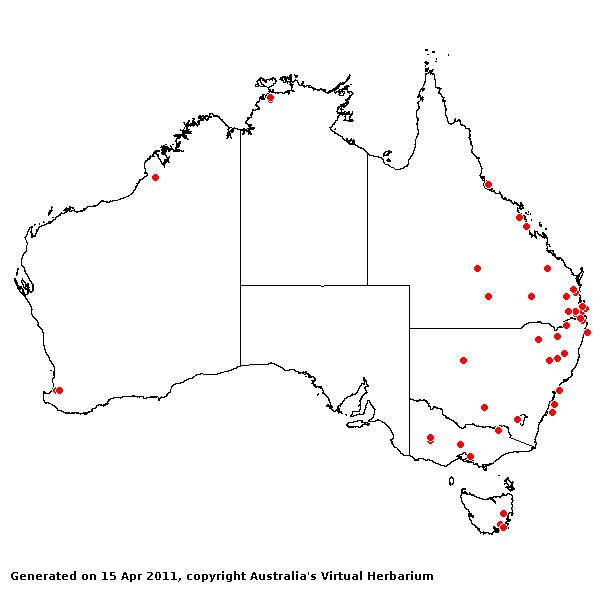Echinochloa frumentacea* Link. Hort. Reg. Bot. Berol. 1: 204 (1827).
Classification. (GPWG 2001) : Subfamily Panicoideae. Paniceae.
Type of Basionym or Protologue Information: India.
Key references (books and floras): [2002] D.Sharp & B.K.Simon, AusGrass, Grasses of Australia, [2008] S.W.L.Jacobs, R.D.B.Walley & D.J.B.Wheeler, Grasses of New South Wales (227).
Illustrations: [2008] S.W.L.Jacobs, R.D.B.Whalley & D.J.B.Wheeler, Grasses of New South Wales, 4th edn (227).
Habit. Annual. Rhizomes absent. Culms erect, stature robust to moderate, 30–150 cm tall, 5–8 -noded. Leaf-sheaths glabrous on surface. Ligule absent. Leaf-blades 8–35 cm long, 5–22 mm wide. Leaf-blade surface smooth.
Inflorescence. Inflorescence compound, a panicle of racemes. Racemes numerous, 1–3 cm long. Central inflorescence axis 6–20 cm long.
Spikelets. Spikelets sessile, 2–4 in the cluster. Fertile spikelets 2-flowered, the lower floret barren (rarely male), the upper fertile, comprising 1 basal sterile florets, comprising 1 fertile floret(s), without rachilla extension, elliptic or ovate or orbicular, dorsally compressed, 2.5–3.5 mm long. Rhachilla internodes brief up to lowest fertile floret.
Glumes. Glumes dissimilar, thinner than fertile lemma. Lower glume ovate, membranous, without keels, 3–5 -nerved. Lower glume surface indumented. Lower glume apex muticous or mucronate. Upper glume ovate, 2.4–3 mm long, membranous, without keels, 3–7 -nerved. Upper glume surface indumented. Upper glume apex muticous or mucronate. Florets. Basal sterile florets 1, barren, with palea or without significant palea. Lemma of lower sterile floret 100 % of length of spikelet, membranous or chartaceous, 5–7 -nerved. Fertile florets bisexual.
Fertile lemma 2–3 mm long, without keel, 5 -nerved. Lemma apex mucronate. Anthers 3.
Continental Distribution: Africa, Temperate Asia, Tropical Asia, Australasia, and South America.
Australian Distribution: Western Australia, Queensland, New South Wales, Victoria, Tasmania.
Western Australia: Gardner, Dampier. Queensland: Burnett, Darling Downs, Maranoa, Mitchell, Moreton, North Kennedy, Port Curtis, South Kennedy, Warrego, Wide Bay. New South Wales: North Coast, Central Coast, North-Western Plains. Victoria: Gippsland Plain, Midlands, Wimmera. Tasmania: East Coast.
Notes. The relationship between E. frumentacea and E. utilis is not clear, and they intergrade morphologically. The colour of the caryopsis is probably the most reliable character for distinguishing between these species. Echinochloa frumentacea has a pearly white caryopsis whereas at maturity the caryopsis of E. utilis is dull, pale yellow to light brown. In general, E. utilis has larger spikelets and longer primary branches. They can be distinguished from the wild forms by the compacted primary branches and the tightly clustered spikelets on these branches.
Introduced. In tropical and subtropical rain forests, temperate rain forests, dry sclerophyll forests, and tropical and subtropical sub-humid woodlands. Flowers Oct.-May.



